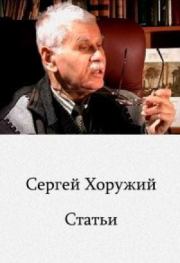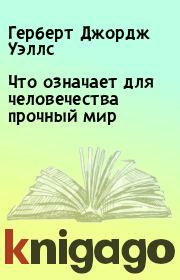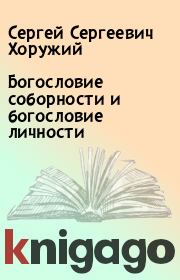Сергей Сергеевич Хоружий - Что такое Synergia?
 | Название: | Что такое Synergia? |
Автор: | Сергей Сергеевич Хоружий | |
Жанр: | Религиоведение | |
Изадано в серии: | неизвестно | |
Издательство: | неизвестно | |
Год издания: | - | |
ISBN: | неизвестно | |
Отзывы: | Комментировать | |
Рейтинг: | ||
Поделись книгой с друзьями! Помощь сайту: донат на оплату сервера | ||
Краткое содержание книги "Что такое Synergia? "
Доклад на Международном симпозиуме “Синергия: концепции - методы - перспективы”. Берлин, 29 июня - 1 июля 2011 г.
The talk presents a systematic analysis of the concept of synergy in principal spheres of its usage, both in history and contemporary academic discourse. It is found that the “territory of synergy” formed by all its meanings includes three main domains, resp., in theology (chronologically, the earliest appearance of synergy), anthropology and synergetics. Corresponding versions of synergy are described, and their mutual relations are elucidated. It is shown that of all versions, the most important role belongs to synergy in anthropology: the original theological notion of synergy can be translated to anthropology as a paradigm of man’s “ontological unlocking” and then extended to a general paradigm of human constitution that is a core of anthropology of a new type, nonclassical, nonessentialist and subjectless. What is more, we describe a program that makes it possible to develop the line of anthropological extensions of synergy even further converting synergy into the methodological principle of a new episteme for the humanities.
Analyzing the relation of this “anthropological mainstream” in the usage of synergy to synergy in synergetics, we find overlapping parts of the two domains. The general conclusion is drawn that all the territory of synergy corresponds basically to one universal paradigm with ramified structure and great heuristic resource which is not yet exhausted by far.
Читаем онлайн "Что такое Synergia? ". [Страница - 3]
- 1
- 2
- 3
- 4
- 5
- . . .
- последняя (10) »
Now we can proceed to the first generalization of this paradigm. We turn to spiritual practices created in other world religions (such as Islamic Sufism, classical yoga, Tibetan tantric Buddhism, Taoism, Zen) and we find in them phenomena close to synergy, but not identical to it. The common feature of all these ancient schools of spiritual experience is that they are practices of human self- transformation (“practices of the Self”, to use the famous term by Foucault) aiming to achieve man’s union with a different horizon of being or, in other words, perform man’s actual ontological transcension. In all spiritual practices this transcension is conceived as an event in the dimension of energy, or being-action, that represents the conversion of the set of all human energies into a different horizon of being. The key distinction of such ontological conversion is that it needs motive power which can only be some “outer energy”, i.e. energy perceived by a man as not belonging to him or any source in his horizon of being, but coming from a certain “Source-Beyond-There” (Vnepolozhny Istok, one of the key concepts of synergetic anthropology). Thus, like Christian practice, any spiritual practice demands the contact and coherence of human energies with energies of a different horizon of being, and this phenomenon of the contact and coherence of two ontologically different kinds of energy could be called synergy. However, conceptions of being and all the ontological discourse in Oriental spiritual traditions are of a very specific nature radically different from European and Christian ontology. The Christian idea of personal God Whose energies collaborate with energies of a human person is deeply alien to Oriental spirituality, and so the plain transfer of the paradigm of synergy into the context of Far-Eastern spiritual practices would produce a grossly westernized and distorted view of them. Keeping in mind the first distinctive feature of synergy, its roots in personal being, we should consider synergy as such, in its full form, as a specifically Christian paradigm. Nevertheless, the radical divergence of spiritual practices in their ontological positions is combined with their far-going resemblance in anthropological aspects. Looking at these aspects closely, we discover that there exists an universal paradigm of spiritual practice (SP) embracing all the set of them; and its core is nothing but synergy taken in its anthropological contents. Here is this paradigm presented as a list of principal properties shared by all spiritual practices.
A. SP is a holistic practice of the Self, the goal of which is actual ontological transformation, transcension of man’s mode of being. This practice deals exclusively with man’s «energetic image», the configuration of all energies of a human being, and elaborates a special art of controlled and directed transformation of this image.
B. SP has progressive nature and discrete (ladder) structure: it is divided into clearly distinct steps, all the series of which is strictly ordered. Each step is a definite type of man’s «energetic image», and the series goes from the initial step corresponding to Spiritual Gate to the final one corresponding to a certain «higher spiritual state», or telos. According to the point A, the telos corresponds to a mode of being different from the usual empiric being, and it is not universal, but different for each SP.
C. The ladder of SP includes the group of lower steps, which basically correspond to processes and procedures of preparatory purification. The purification is also holistic, including necessarily corporeal, emotional and intellectual components.
D. The central block of SP solves the key problem of building-up the anthropological mechanism for the ascent to the telos. Such mechanism should provide the motive power for the ascent, which amounts to opening the access to the ontologically outer energetic factor. It is always realized as a certain analogue of the “ontological mover” in hesychast practice representing some refined school of meditation or prayer that includes special techniques of concentration of attention helping to guard the meditation from all disturbances. In its concrete form, however, the “ontological mover” is in no way universal, but very different for each SP.
E. With the formation of the «ontological mover» SP enters its last big block, in which there appear clear manifestations of the approaching change of fundamental predicates of man’s horizon of being. These manifestations include, in the first place, the emergence of new perceptive modalities.
F. The necessary condition of the achievement of the telos of SP is (cf. the point D) the participation of some energetic factors («energies of the Source-Beyond-There») that are neither provided nor controlled by a man himself.
The last property draws a demarcation line between genuine SPs and all kinds of purely psychological practices, techniques and trainings. At the same time it shows that any SP includes the creation of a certain energetic structure kindred to synergy: man’s energetic image must be transformed in such a way that human energies reach the contact with energies of the Source- Beyond-There. In non-Christian practices this outer energetic factor is something much different from Divine energy in Christian experience so that the created structure is not identical to synergy; but still it preserves its basic anthropological contents. Indeed, if human energies reach the contact with some ontologically different energies, it means that the human person becomes unlocked towards these energies, and eo ipso towards the corresponding horizon of being.
Thus the core of any SP is a certain modification of synergy. Like the original Christian paradigm, it is the contact and coherence of two ontologically different kinds of energy, and in the anthropological aspect, it represents the ontological unlocking of a human person. The other basic feature of the Christian paradigm is also preserved: the unlocking is a practice, in which basic structures of the human person and his/her identity are formed-up. It means that any SP is a constitutive anthropological practice, and the generalized synergy, like the original one, is a paradigm --">- 1
- 2
- 3
- 4
- 5
- . . .
- последняя (10) »
Книги схожие с «Что такое Synergia? » по жанру, серии, автору или названию:
 |
| Бенедикте Леммелейн - Во что я верю, будучи ученым-библеистом? Мой искренний уязвимый ответ Жанр: Биографии и Мемуары Год издания: 2020 |
 |
| Хизер Гуденкауф - То, что скрыто Жанр: Триллер Год издания: 2012 |
Другие книги автора «Сергей Хоружий»:
 |
| Сергей Сергеевич Хоружий - Последний проект Фуко. Практики себя и духовные практики Жанр: Религия Год издания: 2010 |
 |
| Сергей Сергеевич Хоружий - Фонарь Диогена Жанр: Философия Год издания: 2010 Серия: bibliotheca ignatiana |






